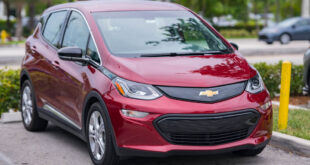Electric Cars for Winter Driving: Your Comprehensive Guide Electric cars are increasingly popular for their efficiency and environmental benefits, but many drivers wonder how they perform in winter conditions. In this article, we’ll explore how electric cars handle winter driving, provide practical tips for optimizing performance, and answer common questions to ensure a smooth experience.
Why Electric Cars Are Great for Winter Driving
Electric vehicles (EVs) are uniquely suited for winter conditions thanks to features like instant torque, precise control, and the absence of an internal combustion engine. Here’s why:
- Instant Heat: Unlike traditional vehicles, EVs don’t need to warm up the engine, meaning the cabin heats up faster.
- Regenerative Braking: This feature enhances traction and efficiency, even on icy roads.
- All-Wheel Drive (AWD) Options: Many EVs offer AWD configurations that are ideal for snowy conditions.
Challenges of Winter Driving in Electric Cars
While electric cars have advantages, winter driving presents specific challenges:
- Reduced Range: Cold weather can lower battery performance by 20-40%.
- Slower Charging: Low temperatures can affect charging speeds.
- Energy Use for Heating: Cabin and battery heating consume energy, impacting range.
Preparing Your Electric Car for Winter Driving
Proper preparation ensures your EV remains reliable in cold conditions.
1. Check Your Tires
Winter tires offer better grip and handling on icy roads. Invest in high-quality tires suited for your region.
2. Precondition Your Battery
Use your EV’s preconditioning feature to warm up the battery while the car is still plugged in, preserving range.
3. Keep the Battery Charged
Maintain a charge level of at least 20-80% to prevent range anxiety and ensure optimal performance.
4. Use Eco-Mode
Eco-mode reduces energy consumption by limiting acceleration and managing heating systems efficiently.
5. Monitor Regenerative Braking
Adjust regenerative braking settings to avoid sudden stops on icy surfaces.
Optimizing Electric Car Range in Winter
Follow these tips to maximize your EV’s range in cold weather:
- Minimize Cabin Heating: Use heated seats and steering wheels instead of blasting cabin heaters.
- Drive Smoothly: Avoid aggressive acceleration and maintain a steady speed.
- Reduce Drag: Clear snow and ice from the car to improve aerodynamics.
- Plan Routes with Charging Stations: Know the locations of charging points along your route.
Best Electric Cars for Winter Driving
Certain EVs are better equipped for winter driving, featuring advanced AWD systems, durable batteries, and efficient heating. Popular models include:
- Tesla Model Y: Offers AWD and excellent range in cold conditions.
- Ford Mustang Mach-E: Equipped with heated seats and efficient battery management.
- Hyundai Kona Electric: Known for its reliability and affordability.
Common Myths About Electric Cars in Winter
Myth 1: EV Batteries Freeze in Winter
Truth: EV batteries are designed to operate in extreme temperatures. Built-in thermal management systems protect them from freezing.
Myth 2: Charging Stations Don’t Work in Cold Weather
Truth: Most public chargers are designed to function in all seasons.
Myth 3: Electric Cars Aren’t Safe on Snowy Roads
Truth: Features like AWD and traction control make EVs comparable to or better than traditional vehicles in snow.
10 Tips for Winter Driving in Electric Cars
- Invest in quality winter tires for better grip.
- Precondition your battery and cabin before starting your journey.
- Keep your EV charged and avoid letting the battery drop below 20%.
- Use seat and steering wheel heaters instead of the cabin heater.
- Maintain a steady speed to maximize range.
- Plan your route and locate nearby charging stations.
- Keep snow and ice off your vehicle to reduce drag.
- Use eco-mode to conserve energy.
- Regularly inspect your tires and brakes for optimal performance.
- Avoid over-reliance on regenerative braking in icy conditions.
10 FAQs About Electric Cars for Winter Driving
1. Do electric cars lose range in winter?
Yes, cold weather can reduce range by 20-40%.
2. Can I charge my EV in freezing temperatures?
Yes, but charging may take longer in extremely cold conditions.
3. Are electric cars safe to drive on ice?
Yes, with features like AWD and proper winter tires, EVs perform well on ice.
4. Do I need special tires for winter driving?
Winter tires are highly recommended for enhanced grip and safety.
5. Does cabin heating impact range?
Yes, using the cabin heater reduces battery range. Heated seats and steering wheels are more efficient.
6. Can EV batteries freeze?
No, thermal management systems keep batteries at an optimal temperature.
7. Is regenerative braking safe on icy roads?
Regenerative braking is safe but should be adjusted to avoid sudden stops on ice.
8. Are there electric SUVs for winter driving?
Yes, models like Tesla Model Y and Ford Mustang Mach-E are excellent options.
9. How do I find charging stations in winter?
Use EV apps like PlugShare or ChargePoint to locate nearby stations.
10. Can EVs handle steep snowy roads?
Yes, especially those with AWD systems and winter tires.
Conclusion
Electric cars are excellent companions for winter driving when properly prepared. While cold weather presents challenges like reduced range and slower charging, strategic planning and smart driving habits ensure a smooth experience. With advanced features like AWD, instant heat, and regenerative braking, EVs provide comfort and safety even in harsh conditions.
By investing in winter tires, preconditioning your battery, and following energy-saving tips, you can maximize your electric car’s performance throughout the season. Whether you’re commuting in the city or embarking on a snowy adventure, electric vehicles prove to be reliable and efficient choices for winter driving.
 oto car insurance used car repair
oto car insurance used car repair
